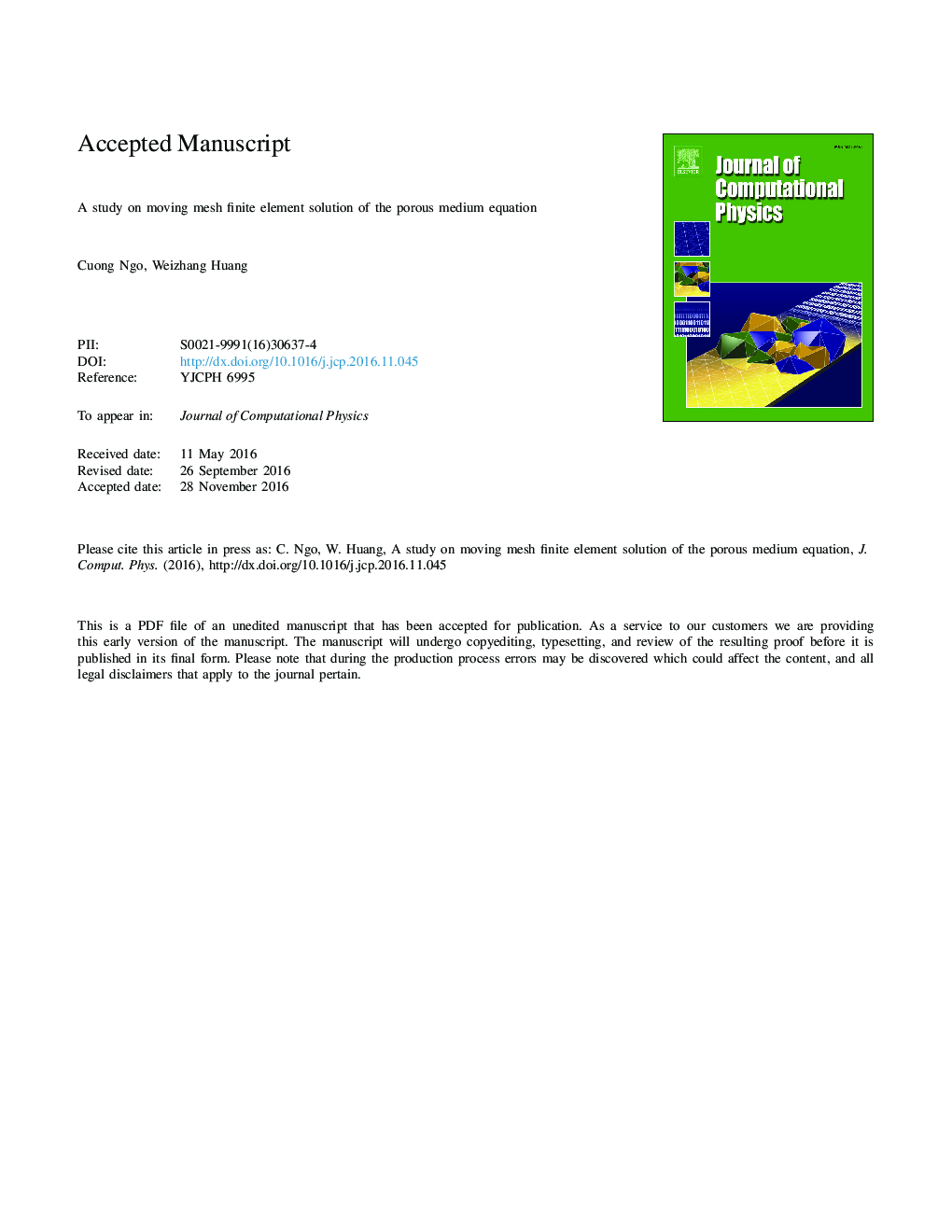| کد مقاله | کد نشریه | سال انتشار | مقاله انگلیسی | نسخه تمام متن |
|---|---|---|---|---|
| 4967650 | 1449382 | 2017 | 32 صفحه PDF | دانلود رایگان |
عنوان انگلیسی مقاله ISI
A study on moving mesh finite element solution of the porous medium equation
ترجمه فارسی عنوان
مطالعه ای در رابطه با جابجایی مش عناصر محدود از معادله محیط متخلخل
دانلود مقاله + سفارش ترجمه
دانلود مقاله ISI انگلیسی
رایگان برای ایرانیان
کلمات کلیدی
ترجمه چکیده
یک روش عنصر محدودی مش مشبک سازگار برای حل عددی معادله محدب متخلخل با و بدون متغیرها و جذب مورد بررسی قرار گرفته است. این روش بر مبنای رویکرد معادلات دیفرانسیل با استفاده از مش در حال حرکت است و از اجرای آن به تازگی توسعه یافته بهره می گیرد. این پیاده سازی چندین پیشرفت را در مقایسه با سنتی، از جمله فرم صریح و جمع و جور آن از سرعت مش، سهولت برنامه، و احتمال کمتر تولید مشهای تکین، به دست می دهد. سه نوع تانسور متریک که به صورت یکنواختی و بر مبنای همبستگی و شبکههای سازگار مبتنی بر حسنی برمیخورند در نظر گرفته میشوند. این روش همگرایی مرتبه اول را برای شبکههای تطبیقی مبتنی بر یکنواخت و موازی و همگرایی مرتبه دوم برای شبکه های سازگار مبتنی بر حسینی نشان می دهد. همچنین نشان داده شده است که این روش را می توان برای شرایطی با مرزهای پیچیده آزاد، در حال ظهور و تقسیم مرزهای آزاد و معادله متوسط متخلخل با متغیرها و جذب استفاده کرد. نتایج عددی دو بعدی ارائه شده است.
موضوعات مرتبط
مهندسی و علوم پایه
مهندسی کامپیوتر
نرم افزارهای علوم کامپیوتر
چکیده انگلیسی
An adaptive moving mesh finite element method is studied for the numerical solution of the porous medium equation with and without variable exponents and absorption. The method is based on the moving mesh partial differential equation approach and employs its newly developed implementation. The implementation has several improvements over the traditional one, including its explicit, compact form of the mesh velocities, ease to program, and less likelihood of producing singular meshes. Three types of metric tensor that correspond to uniform and arclength-based and Hessian-based adaptive meshes are considered. The method shows first-order convergence for uniform and arclength-based adaptive meshes, and second-order convergence for Hessian-based adaptive meshes. It is also shown that the method can be used for situations with complex free boundaries, emerging and splitting of free boundaries, and the porous medium equation with variable exponents and absorption. Two-dimensional numerical results are presented.
ناشر
Database: Elsevier - ScienceDirect (ساینس دایرکت)
Journal: Journal of Computational Physics - Volume 331, 15 February 2017, Pages 357-380
Journal: Journal of Computational Physics - Volume 331, 15 February 2017, Pages 357-380
نویسندگان
Cuong Ngo, Weizhang Huang,
